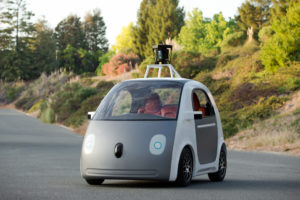BLENHEIM GANG June, 18th 2014 > version française
THE SIX MILLION DOLLAR CAR
On May 28, 2014, Google presented their car, an historic turning point in the automobile Industry (or at least, in the history of mass transit).
Not that removing the steering wheel represents, strictly speaking, a new automobile sector. The Google Car isn’t ‘new’ in the sense of autonomizing the driver as opposed to making the machine itself autonomous. An automobile is identified by its range of motion and flexibility to easily maneuver in and out of regularly encountered situations, while taking into account our respective responsibilities. Otherwise, it would be a bicycle.
On the other hand, the ‘solution’ proposed by Google (without elaborating on the ‘problem’ to be solved) raises two particularly timely questions among car enthusiasts: Why was this announcement not made in collaboration with a classic car manufacturer? And, why the koala bear look?
On one hand, there’s the Automobile, with its inherent economic, ecological and technical problems, the result of antiquated ‘ever-more-gadgets’ marketing, supported by richly endowed advertising campaigns (upwards of €1,500 per car sold). On the other hand, there’s Google, the search engine controlling traffic on the information highway, a highly profitable venture of selling virtual information using the simplest possible hardware. A viper’s tongue would say that this announcement was most compelling among unsuspecting investors with wads of cash, or, perhaps, to grab the reins in a potential negotiation with Tesla, via Uber where Google has invested $220M.
Interestingly, the following day, Elon Musk presented his own SpaceX Dragon. And Carlos Ghosn, upholding his image as High Holy Knight of the Automobile Order, has also chimed in making utterances about removing the steering wheel, etc. Truly a media circus.
Google was anxious to accelerate the pace of deliberations by authorities allowing computers to decide which crew member to sacrifice, according to tax bracket, in an inevitable accident at the intersection. Though, there’s not much left to legislate since the authorization of the assorted radar systems in German sedans.
Still, we should recognize the roadways as the final frontier of liberty and responsibility, and, like Sarah Connor, consider technology as a problem-solving tool, not an end in itself. Just because technology makes it possible doesn’t mean intelligence is inside.
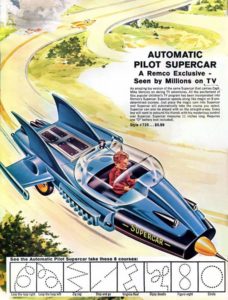
And, we shouldn’t consider the styling of the Google Car as ‘rash’ due to strategic contingencies. To think that Google isn’t shrewd enough to play upon its rookie image in order to advance pawns would be an error of lèse-majesté, very common in the automobile industry.
Jason Torchinsky at Jalopnik figured out that the style of the Google Car, somewhere between an automobile and a non-automobile, was most probably perfection itself: the balance between vehicle size and potential usage, elimination of manual control leading to programmed guilt, personalizing the chassis to avoid measuring up to canons of the genre, koala kawaii styling to distract from the idea that Hal 9000 has taken over the commands . . .
I would add that Google Car’s awkward, disingenuous design is perfect bait for supercilious automotive designers who might be tempted to take up the matter themselves, thereby freeing Google from the vulgar onus of automobile hardware. Yet, nostalgic 40-somethings will remember the Swatchmobile having lost grey matter after undergoing Mercedes-Benzification which reduces down to yellow doors. Everyone can’t be an Elon Musk directly taking on manufacturers on the turf of high-end, family-sized sedans.
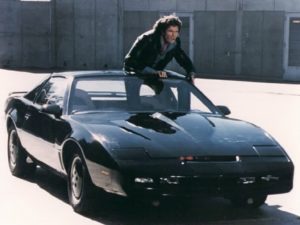
Obviously, the business model for Google Car is not that of the automobile industry, where billions are invested to convince users that innovation is a sequential tail light, bringing a 3% margin at best after five years in development. Anyway, here again we won’t elaborate since the koala-bear nose was enough to create a stir. But, let’s not underestimate that the average shopping cart is three times higher behind the windshield (over €6,000 a year in insurance, fuel, servicing, visits to the mall) than in front of the screen (under €2,000 a year in online shopping).
If the headlines had read “Google reinvents the tram”, we’d have had less debate about the styling, which remains fairly classic. But, if we take a more spirited view and say that Google hasn’t designed a car, which for them no longer exists, then we might perceive something new afoot, meriting closer inspection.
Unfortunately, the hallowed automobile designers we idolized in our youth, nurture their defensive instinct by insisting on the superficial, referring to the line or overhang of the Google Car, comparing sketches with other sketches, remaining anchored in conservatism rather than sketching out direction or meaning.
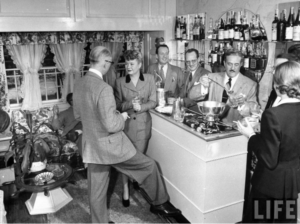
It’s easy to criticize Google’s cynicism regarding design, but which model do automobile designers advocate? That of Loewy, the Oppenheimer of commercial design, Machiavelli of pre-programmed obsolescence, putting brand identity in the consumer’s mirror, defining beauty by the tilt of a car door, assigning market value to emotions (more or less effectively as compared to a composer, writer or film director)?
Design is a delicate savoir faire which could function as a vector for essential and necessary messaging, whereas, today it is used by the automobile industry to patch the oozing cracks of an over-boiled egg.
Automobile designers must use their minds and culture, their openness to the world, and their artisanal talents so that visual messaging conveys meaning and intention. For now, we’re witnessing only the paltry spatter of late Sunday afternoon posers hoisting glasses of flattened champagne. The Automobile’s future is not lingering around at yet another mundane cocktail party.
Another question nags. Why Google, and Elon Musk before, are entering the real world with so few references to the new business models they invented for e-business?
Whereas Google brilliantly demonstrated the economic value of emancipating users by affording them free access to friendly and collaborative tools (search engines, maps, assorted software), when it comes to the automobile they emancipate the object. Of course, freeing up brain time while stuck in traffic to study, be entertained, rest or work, impacts on our personal emancipation or on security issues. But, was the steering wheel really the problem?
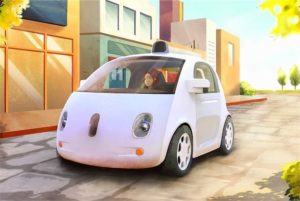
Let’s hope the trillions spent these past twenty years to impose uniform thinking in automobile design, from Tata to Bentley, haven’t sullied the hope of rediscovering the Blenheim of the future.
06/18/2014
https://www.blenheimgang.com/la-voiture-qui-valait-3-milliards/
